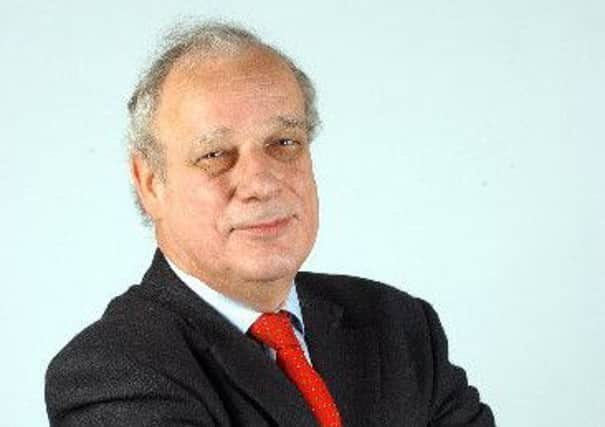Comment: Recovery signs put SNP in tricky spot


But in the past few weeks a cascade of improving economic news has dealt a wounding blow to the SNP critique of an upturn thwarted by the “austerity” policies of Chancellor George Osborne.
That critique urged resort to Keynesian fiscal stimulus if there was to be any prospect of a sustainable recovery. Mr Osborne has declined to follow this advice – and yet a recovery story is unfolding.
Advertisement
Hide AdAdvertisement
Hide AdIt is by no means a knockout blow for the Chancellor. Growth is still well below the long-term trend, households budgets are still being squeezed and output has yet to recover to its pre-banking crisis peak.
But you would need to be in some extreme religious cult on a remote mountain not to acknowledge the deluge of recovery signs. From services to manufacturing, retail sales to construction, house prices to business confidence, the past month has brought a deluge of sharply improved performance and encouraging data. Economists are raising their forecasts for this year and next, the Organisation for Economic Co-operation and Development (OECD) last week acknowledged the UK’s “firming recovery”, and on Friday came news of a sharp improvement in the UK trade figures. Export volumes are growing twice as fast as imports, and there is further evidence of a heartening recovery in manufacturing exports. Now it looks as if GDP growth in the July-September period could be as high as 0.7 per cent, giving the second successive quarter in which growth has been above 0.5 per cent, for the first time since 2010.
And it is not as if Scotland is missing out. Our economy grew by more than the UK’s as a whole in the first quarter. And our unemployment rate, at 7.1 per cent, is significantly lower than that for the UK overall at 7.8 per cent.
We are witnessing a transformation from the position in January, when the widespread concern was that we were on the brink of a “triple dip” recession. Business confidence was at rock bottom and households, even if able, were reluctant to spend on big-ticket items.
Even with the caveats I have cited – an economy still historically at a low ebb and a pace of recovery well below that recorded in previous upturns – this is unarguably good news and is likely to have a self-reinforcing effect, with business confidence in particular likely to strengthen on the back of this evidence.
Particularly notable is that we are enjoying an upturn without resort to the big Keynesian fiscal stimulus urged from the opposition benches and from the SNP administration. Indeed, the UK government has continued to bear down on departmental spending and to reduce the annual budget deficit. What looks to be unfolding is the very “expansionary fiscal contraction” that critics roundly denounced as an oxymoron. Both Labour and the SNP used every opportunity to urge greater borrowing to undertake Keynesian-style government spending projects.
Many infrastructure projects have merit where a proven and long-lasting economic benefit can be shown, but the SNP’s critique has consistently turned a blind eye to horrific government borrowing and in particular the colossal level of government net debt – now more than £1 trillion and sucking out some £60 billion a year in debt interest.
More debt and more borrowing seemed to hold no terrors for the SNP. Indeed, it has maintained a relentless clamour for more borrowing powers.
Advertisement
Hide AdAdvertisement
Hide AdDespite this, surely the recovery signs would be welcome, even if they were not bought by higher borrowing and debt? But the response of finance minister John Swinney to UK GDP figures showing a sharp upturn in the second quarter was grudging and mean-spirited. “Today’s figures, while welcome”, he grumbled, “do not disguise the fact that the recovery at the UK level continues to be fragile and the UK government must heed the advice of the International Monetary Fund, the OECD and Scottish ministers to do more to support growth and employment.”
Without any recognition of irony, Mr Swinney cited figures showing Scotland, far from wilting under austerity and the repressive policies of the “London-based parties”, has been enjoying a faster rate of growth and a lower rate of unemployment than the UK overall.
Why does the SNP administration seem to have difficulty in fully recognising the evidence of recovery? One reason may be an ideological reluctance to admit that anything beneficial could unfold at UK level – especially from an administration that has not given in to siren calls for Keynesian reflation. As a result, the Holyrood administration may struggle to understand how this recovery has come about and the dynamics of the entrepreneurial forces driving it. After all, how can this be when only politicians and governments can deliver growth?
Another problem for the SNP is that it is increasingly difficult to sustain the politics of neglect and grievance when there is such clear evidence of improvement. The SNP either has to convince voters that the recovery is due to its own efforts or that the recovery would be stronger and more advanced had the UK administration followed its Keynesian prescription.
It is true that these are early days and much still needs to be done, in bank lending to business and in business investment spending, for there to be real certainty of a sustainable recovery. But with service-sector output at its highest since 2006, manufacturing output in June up 1.9 per cent on a year ago, construction at a 37-month high and retail sales running 3.9 per cent above last year’s level, all this suggests a broad upturn at a brisk pace – making it all the more difficult to mount a convincing argument that alternative policies would bring about faster improvement without sparking fears of a bubble.
Mr Salmond and his team may be far from down and out, but the recovery signs this summer look to have dealt their Keynesian critique a winding blow.
Twitter: @Bill_Jamieson